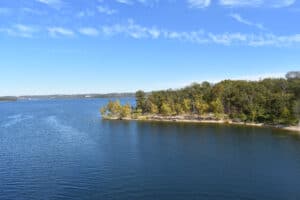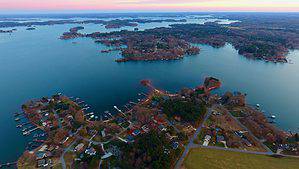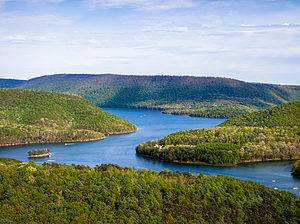Missouri is home to many rivers, including the Missouri River and the Mississippi River which borders the eastern side of the state. Several of Missouri’s lakes were formed from the rivers flowing through the state. These reservoirs were formed to assist with flood prevention, act as a water supply and provide outdoor recreational opportunities for Missouri residents and tourists.
Two of Missouri’s lakes are named after notable individuals such as Mark Twain and Harry S. Truman. Lake of the Ozarks is a serpentine-shaped body of water sometimes called Puff The Magic Dragon. Table Rock Lake, near Branson, Missouri, has many coves along its shoreline providing great fishing for many species including largemouth bass, white bass, smallmouth bass, and spotted bass.
Stockton Lake, located in southwestern Missouri, is home to prestigious sailing events such as the Governor’s Cup Regatta. Pomme de Terre Lake is known for providing good hunting for a wide range of species including rabbit, dove, squirrel, turkey, and deer.
Let’s dive into 10 of the best lakes in Missouri, including a look at the largest lake in the state!
1. Lake of the Ozarks
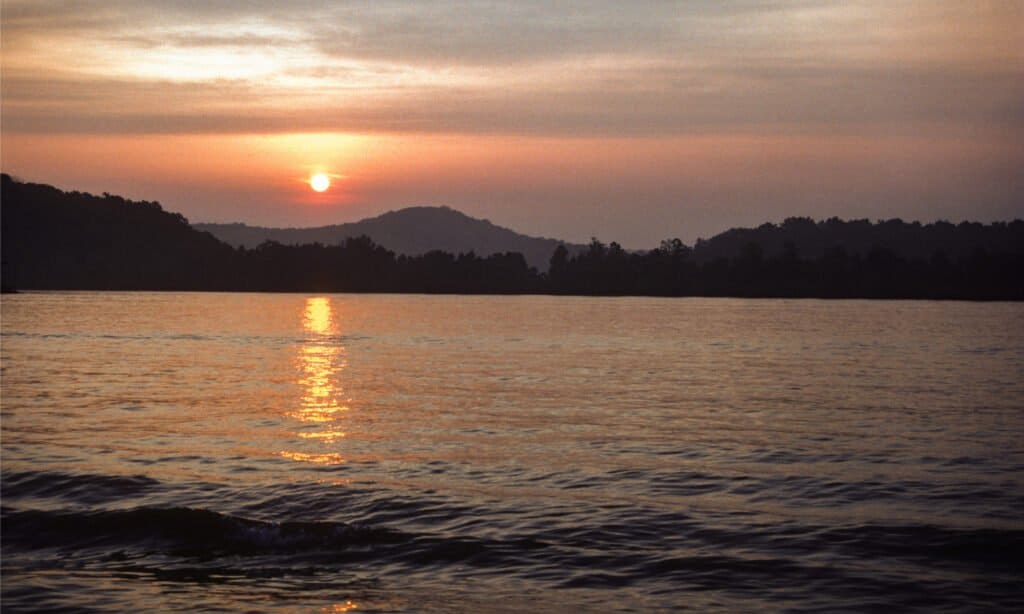
Lake of the Ozarks known today for great fishing and hunting was originally envisioned by Ralph Street in 1912 and known as Osage Reservoir
©iStock.com/scgerding
● Surface Area: 54,000 Acres
● Max Depth: 130 Feet
● Camping/Overnight Available: Yes
● Boating/Docks Available: Yes
● Swimming Permitted: Yes
● Fishing Permitted: Yes
● Best For: Fishing, Hunting, Historically Largest Lake in the USA, Unique Serpentine Shape, Wineries, Ziplines
Lake of the Ozarks is, technically a reservoir, located in central Missouri within the Ozark Mountains. The lake was formed by the damming of the Osage River and the Niangua River, Grandglaize Creek, and Gravois Creek. The lake’s body has a serpent-like shape earning it the name Puff The Magic Dragon.
At the time Lake of the Ozarks was built it was one of the largest man-made lakes in the United States and also one of the largest lakes in the entire world. Today the lake is a first-rate vacation destination and provides fantastic fishing opportunities. Some of the fish species anglers can expect to catch at Lake of the Ozarks include black bass, largemouth bass, Kentucky spotted bass, white crappie, black crappie, channel catfish, blue catfish, white bass, and walleye.
Lake of the Ozarks also offers golf, horseback riding, boat excursions, wineries, airplane and helicopter tours, ziplines, spas, shopping, resorts, and much more. In addition to the fishing and many other activities and amenities hunting at Lake of the Ozarks is also very popular. Deer and turkey are the two most common game targeted by hunters at Lake of the Ozarks.
2. Bull Shoals Lake
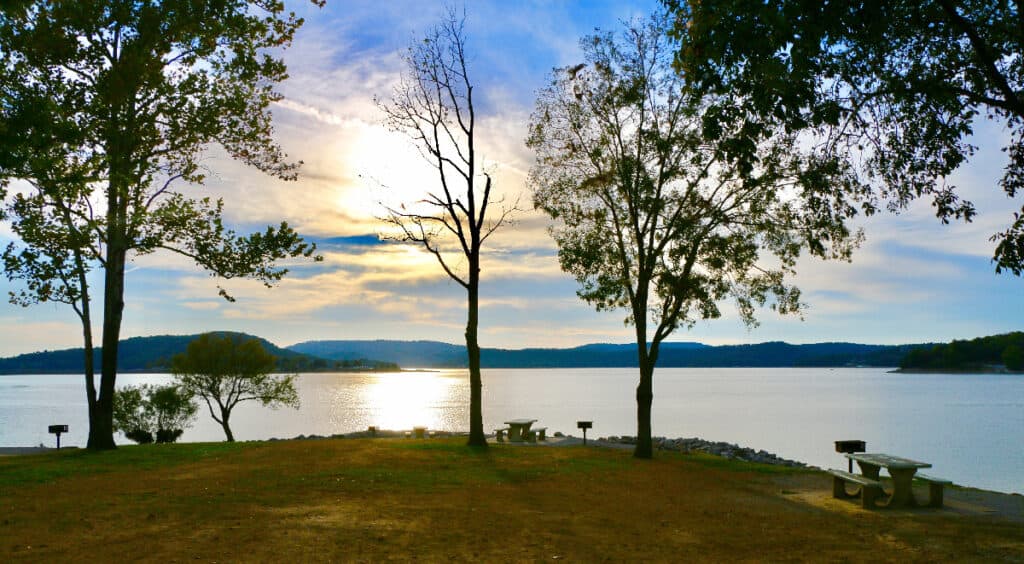
Forty-five thousand-acre Bull Shoals Lake is located in southern Missouri, spanning into northern Arkansas, and managed by the Army Corps of Engineers
©Tara Ballard/Shutterstock.com
● Surface Area: 45,150 Acres
● Max Depth: 210 Feet
● Camping/Overnight Available: Yes
● Boating/Docks Available: Yes
● Swimming Permitted: Yes
● Fishing Permitted: Yes
● Best For: Flood Control, Bassmaster Elite Series Tournaments in 2012, Wide Range of Fish Species, Birdwatching, Full-Service Amenities, Nineteen Developed Parks, Bull Shoals-White River State Park
Bull Shoals Lake is located in southern Missouri and its massive waters stretch all the way into northern Arkansas. Bull Shoals Lake is seated within the Ozark Mountains and is technically a reservoir. The reservoir has nineteen total developed parks surrounding its one thousand-mile shoreline.
The lake is formed by the Bull Shoals Dam created in 1951 which was the 5th largest dam in the world at that time. The White River flows into Bull Shoals Lake creating a superior environment for many types of fish. Some of the fish species anglers can expect to find at Bull Shoals Lake include cutthroat trout, black crappie, bluegill, walleye, spotted bass, smallmouth bass, rainbow trout, brown trout, and largemouth bass.
Bull Shoals lake is known for great fishing however many other activities and amenities are available including boating, water sports, swimming, and birdwatching. Eagles are regularly seen in the Bull Shoals area and the US Army Corps of Engineers offers guided bird walks, guest speakers, and live bird demonstrations. Other bird species commonly spotted at Bull Shoals Lake include Lapland longspurs, meadowlarks, finches, sparrows, orioles, herons, egrets, American white pelican, yellow-bellied flycatcher, cedar waxwing, evening grosbeak, rose-breasted grosbeak, and painted bunting.
3. Table Rock Lake
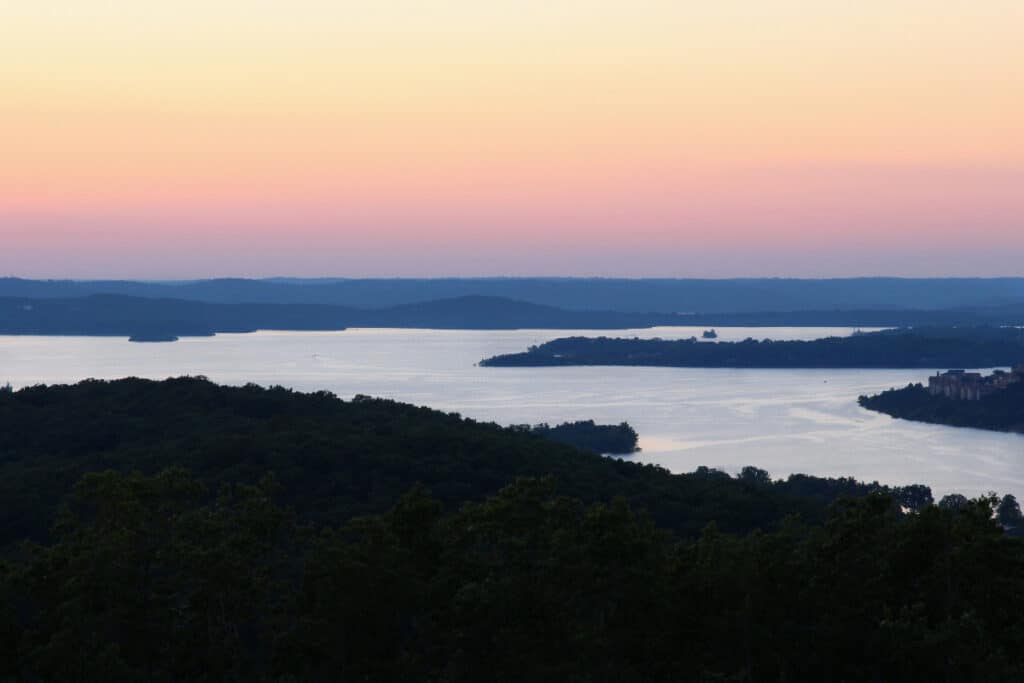
Near Branson, Missouri rests the uniquely shaped Table Rock Lake sporting numerous coves that provide excellent fishing
©iStock.com/Eifel Kreutz
● Surface Area: 43,100 Acres
● Max Depth: 220 Feet
● Camping/Overnight Available: Yes
● Boating/Docks Available: Yes
● Swimming Permitted: Yes
● Fishing Permitted: Yes
● Best For: Unique Shape, Numerous Coves, Fishing, Birdwatching, Nearby Branson, White River
Table Rock Lake, located in southwestern Missouri, was created over fifty years ago through the formation of the Table Rock Dam. The White River is the primary source of water flowing into Table Rock Lake; both provide great fishing opportunities. Table Rock Lake possesses a unique shape consisting of many arms jutting out from the shoreline creating numerous coves.
Table Rock Lake’s nearly eight hundred-mile shoreline is actually larger than the coast of the state of California. The numerous coves along Table Rock Lake’s shoreline provide home to many fish species including largemouth bass, white bass, smallmouth bass, spotted bass, bluegill, walleye, flathead catfish, green sunfish, and longear sunfish. The lower twelve miles of the north fork of the White River also provide trophy trout angling.
The Table Rock Dam and Lake area is prime for bird watching throughout the entire calendar year. Several types of birds inhabit the area including the American kestrel, eastern kingbird, tree swallow, Canadian geese, mourning dove, black vulture, bald eagle, great crested flycatcher, white-eyed vireo, blue jay, and American crow. Table Rock Lake visitors can also explore nearby Branson known as a family vacation destination with attractions like Marvel Cave, Dolly Parton’s Dixie Stampede Dinner Attraction, and Silver Dollar City.
4. Stockton Lake
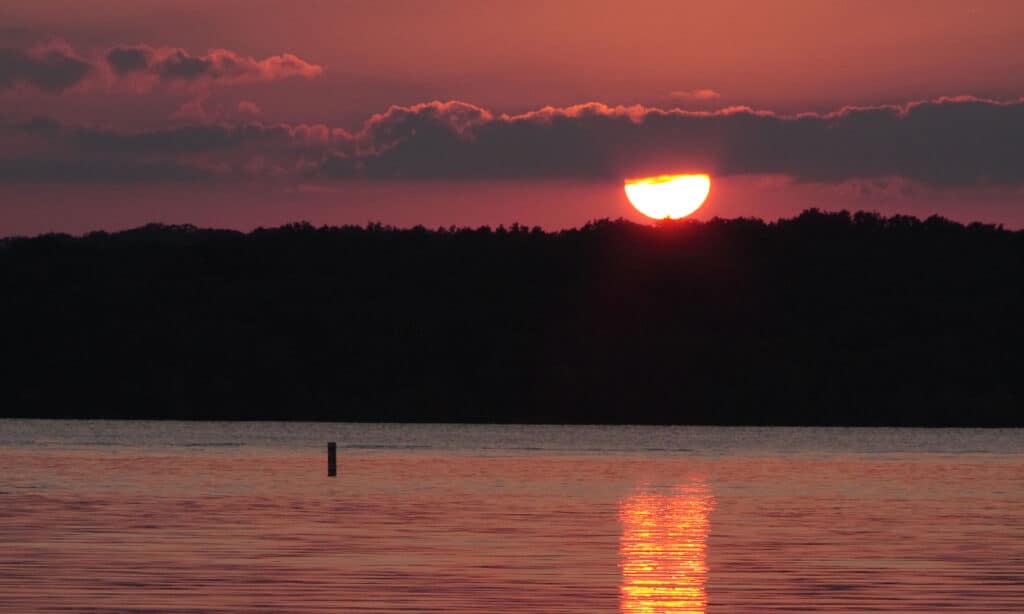
Stockton Lake is located in southwestern Missouri and known for exceptional sailing with the Stockton Yacht Club holding regular races including the Governor’s Cup Regatta
©iStock.com/jwdorris
● Surface Area: 24,900 Acres
● Max Depth: 100 Feet
● Camping/Overnight Available: Yes
● Boating/Docks Available: Yes
● Swimming Permitted: Yes
● Fishing Permitted: Yes
● Best For: One of Missouri’s Seven Major Lakes, Sailing, Governor’s Cup Regatta, Stockton Yacht Club, Water Source for Springfield
The vee-shaped Stockton Lake is a reservoir in southwest Missouri managed by the Army Corps of Engineers. Stockton Lake provides three marinas and ten public-use areas for lake visitors. The reservoir is undeveloped offering a serene, nature-filled lake getaway experience.
Stockton Lake is one of Missouri’s seven major lakes that was formed by damming the Sac River in 1969. The lake helps to supplement water for the city of Springfield and due to its many coves is also a popular wakeboarding spot. Stock Lake visitors can also explore the fifteen-mile-long Stockton Equestrian Trail available for walking, hiking, and mountain biking; no motorized vehicles are permitted.
Consistent strong winds from as far away as Oklahoma and Kansas provide outstanding sailing opportunities at Stockton Lake. Annual sailing races are conducted by the Stockton Yacht Club the most notable being the Governor’s Cup Regatta. Fishing is also great at Stockon Lake with regular catches being bass, white bass, crappie, walleye, catfish, and bluegill.
5. Norfolk Lake
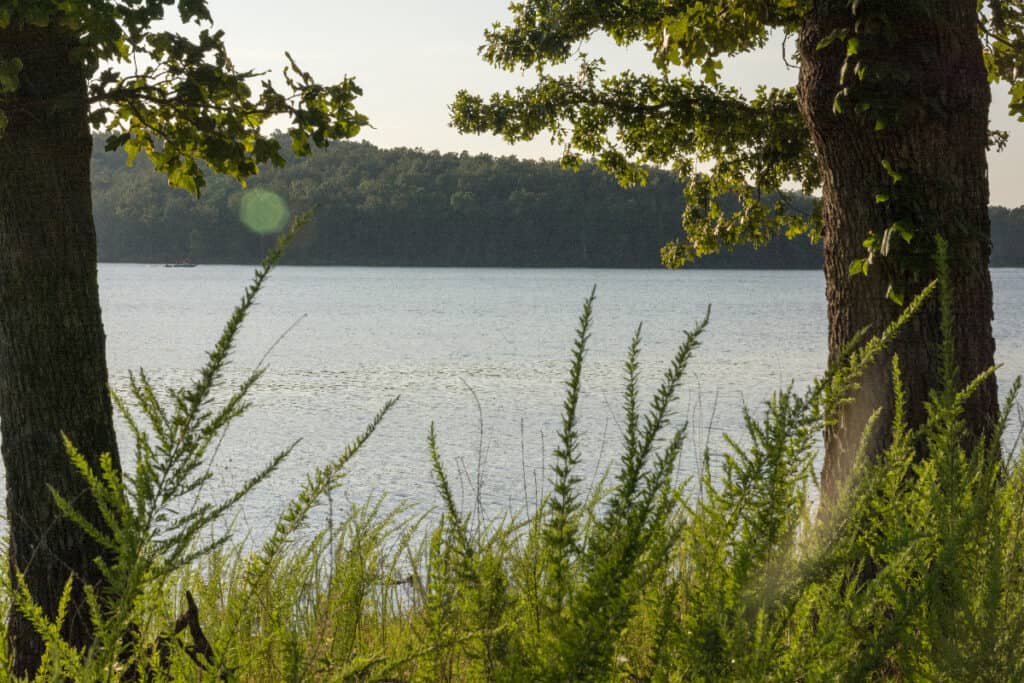
Norfolk Lake is formed by the creation of the Norfolk Dam which impounds the North Fork River; expect large bass
©Bohn and Reis/Shutterstock.com
● Surface Area: 22,000 Acres
● Max Depth: 177 Feet
● Camping/Overnight Available: Yes
● Boating/Docks Available: Yes
● Swimming Permitted: Yes
● Fishing Permitted: Yes
● Best For: Large Bass, Fishing, Hunting, Norfork Dam, Flood Prevention, Nineteen Recreational Parks, Underwater Ghost Towns, North Fork River, River Trout Fishing
Norfolk Lake is located in north-central Missouri with a significant portion of the water residing in bordering Arkansas. The Norfork Dam which impounds the North Fork River to create Norfolk Lake was one of the six largest concrete dams in the United States at the time of its creation in the early 1940s. Camping, hiking, picnicking, swimming, boating, and water skiing are all popular activities at the nineteen recreational parks provided at Norfolk Lake.
Anglers can expect to find white bass, striped bass, spotted bass, largemouth bass, and walleye while fishing Norfolk Lake. The North Fork River also has excellent fishing with trout being the prize catch. Types of trout targeted by anglers at the North Fork River include rainbow trout, brown trout, and cutthroat trout.
Norfolk Lake has an undeveloped lakefront and shoreline providing a natural setting for lake visitors. Norfolk Lake and the surrounding area provide great hunting opportunities for bear, turkey, deer, rabbit, squirrel, dove, and quail; both firearms and archery are permitted. On the Arkansas side of the lake, several old towns are submerged including Henderson, Elizabeth, Custer, Hand, Jordan, and Herron still stand from the time of the lake’s creation.
6. Mark Twain Lake
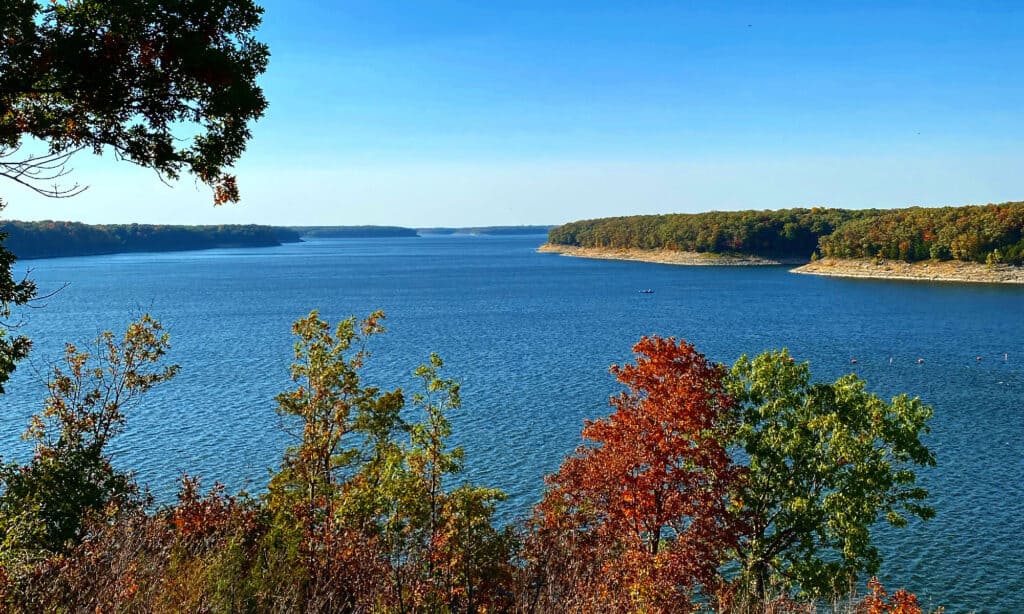
Mark Twain Lake is named for the famous author who was born in the town of Florida, Missouri where the lake stands today
©iStock.com/Christine Robbins
● Surface Area: 18,600 acres
● Max Depth: 85 Feet
● Camping/Overnight Available: Yes
● Boating/Docks Available: Yes
● Swimming Permitted: Yes
● Fishing Permitted: Yes
● Best For: Named After Famous Author Mark Twain, Mark Twain State Park, Clarence Cannon Dam, Salt River, Mark Twain State Park, Village of Florida, Mark Twain’s Birthplace
Mark Twain Lake was originally created to assist with flood control and prevention as part of the Flood Control Act of October 1962. The lake’s main inflow the Salt River had historically caused issues with flooding and the Joanna Dam was initially proposed in 1937. The dam was later renamed Clarence Cannon Dam to honor Cannon’s forty-two years of service in the U.S. House of Representatives.
The town of Florida, Missouri is the birthplace of the famous author Mark Twain; the lake was named after Twain. Mark Twain Lake is a choice place for family outdoor recreation including boating, swimming, fishing, picnicking, hiking, and hunting. The lake is a full-service experience with campgrounds, beaches, and picnic shelters managed by the U.S. Army Corps of Engineers.
The full Clarence Cannon Dam and Mark Twain Lake area are fifty-four thousand acres full of fishing, hunting, and birdwatching opportunities. Primary fish species found in Mark Twain Lake include catfish, bass, crappie, walleye, bluegill, and sunfish. Hunters can expect to find a wide range of species including deer, turkey, rabbit, squirrel, woodcock, mourning doves, ducks, raccoon, bobcat, fox, and coyote.
7. Lake Wappapello
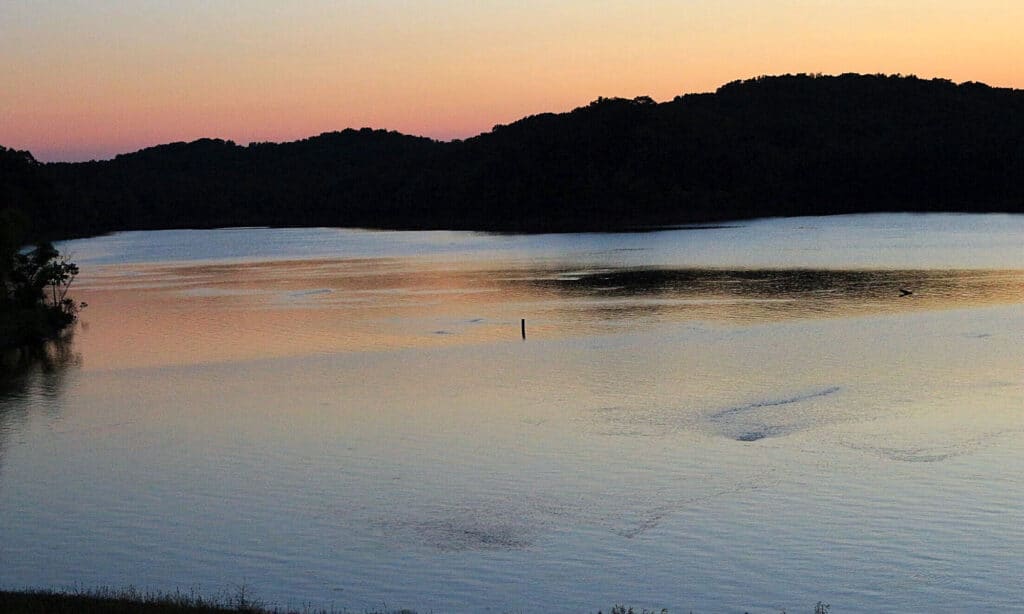
Lake Wappapello is located in southeastern Missouri and formed through impounding St. Francis River by Wappapello Dam in 1941 to provide flood control
©iStock.com/Pride Wilder
● Surface Area: 8,400 acres
● Max Depth: 47 Feet
● Camping/Overnight Available:
● Boating/Docks Available: Yes
● Swimming Permitted: Yes
● Fishing Permitted: Yes
● Best For: Flood Control, Fishing, Great Scenery, Picturesque Views, Top Bass Fishing Spot, Spring Crappie Fishing, Abundant Catfish, Asher Creek, Birdwatching, Lake Wappapello Trail
Lake Wappapello is a reservoir located in southeastern Missouri made through the creation of the Wappapello Dam in 1941 blocking the flow of the St. Francis River. Lake Wappapello provides lake visitors with paved boat ramps and a managed swimming beach. Lake visitors can utilize Ridge Campground, Asher Creek Campground, and the Lake Wappapello Trail which is open to backpackers.
Fish species at Lake Wappapello include white bass, largemouth bass, and bluegill. The lake is known as a top destination for bass anglers in southeast Missouri because of the size and density of the species in the water. Spring crappie fishing and abundant catfish are two additional well-known features of Lake Wappapello.
Lake Wappapello State Park is located on the southwestern side of Lake Wappapello. Lake visitors can find two campgrounds, and trails for hiking, biking, backpacking, and horseback riding in the state park. Lake Wappapello’s Asher Creek provides birdwatchers with opportunities to view a range of bird species including eagles, ospreys, various types of ducks, barred owls, great horned owls, and blue herons.
8. Pomme de Terre Lake
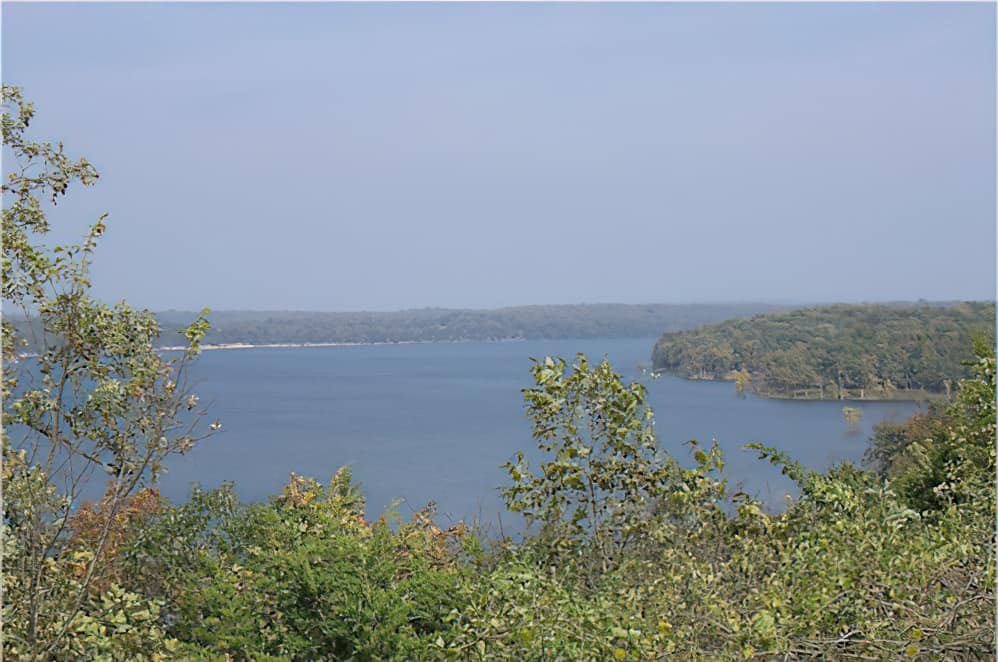
Pomme de Terre Lake sits in central-western Missouri and is known for its muskie, bass, and crappie fishing
©This image or file is a work of a U.S. Army Corps of Engineers soldier or employee, taken or made as part of that person’s official duties. As a work of the U.S. federal government, the image is in the public domain. – License
● Surface Area: 7,820 Acres
● Max Depth: 23 Feet
● Camping/Overnight Available: Yes
● Boating/Docks Available: Yes
● Swimming Permitted: Yes
● Fishing Permitted: Yes
● Best For: Flood Control, Muskie Fishing, Bass & Crappie Fishing, Six Hundred and Fifty Campsites, Beaches, Hunting, Birdwatching
Pomme de Terre Lake is located in centralwestern Missouri and gets its name from the French word for potato. The lake was built in 1961 by the United States Army Corps of Engineers to assist with flood control in the Osage River Basin. Today, Pomme de Terre Lake provides extensive facilities for lake guests with six hundred and fifty campsites and two public swimming beaches.
Locals know Pomme de Terre Lake for its top-notch largemouth bass, crappie, and white bass fishing. In addition to the well know bass and crappie fishing Pomme de Terre Lake is nationally known for its muskie population; the species stocked since 1966. The Lost Valley Fish Hatchery manages the muskie reproduction and stocking keeping an ample supply of the species available.
Pomme de Terre Lake provides plenty of opportunities for birdwatchers with commonly spotted species being snow geese, wood duck, mallard, northern bobwhite, common goldeneye, wild turkey, rock pigeon, ruby-throated hummingbird, great blue heron, black vulture, house wren and barred owl. The lake and surrounding area also provide a great habitat for hunting with permitted species being rabbit, dove, squirrel, turkey, deer, and waterfowl. Lake visitors can also take advantage of the many rentals available including bicycles, boats, boat slips, canoes, kayaks, tubes, and personal watercraft.
9. Smithville Lake
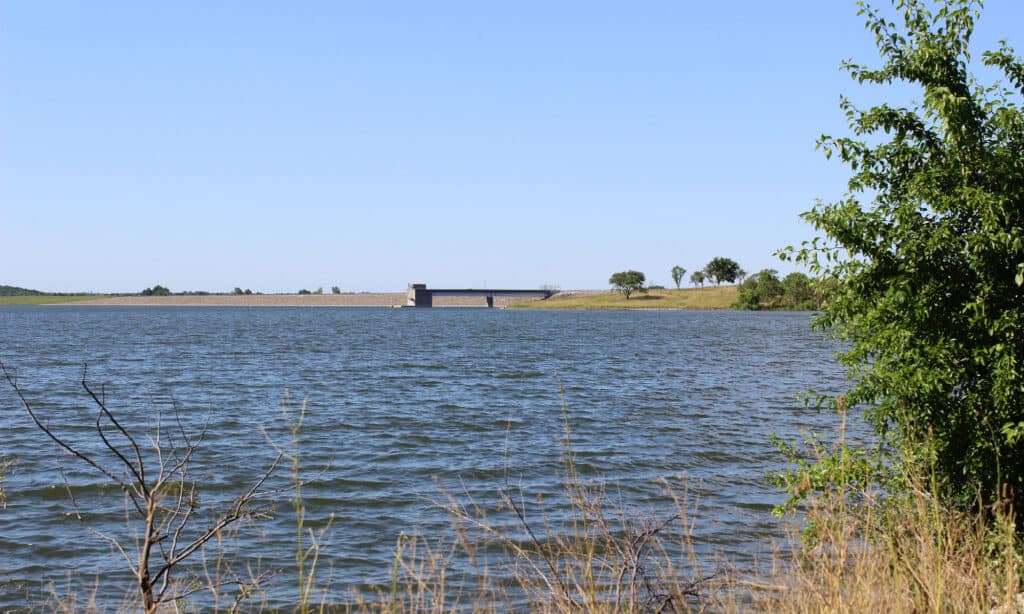
Smithville Lake is located in the northwestern region of Missouri and is known for water provision for surrounding municipalities and good catfish, bass, and bluegill fishing
©iStock.com/Jon Kraft
● Surface Area: 7,190 Acres
● Max Depth: 60 Feet
● Camping/Overnight Available: Yes
● Boating/Docks Available: Yes
● Swimming Permitted: Yes
● Fishing Permitted: Yes
● Best For: Water Supply for Kansas City & Several Other Missouri Cities, Jerry Litton Visitor Center, Birdwatching, Fish Stocking Program, Bass & Catfish, Bluegill Fishing
Smithville Lake is located in northwestern Missouri near the Nebraska border. The lake is formed by the Smithville Dam which was completed in 1977. The lake has a visitor center to honor the American politician Jerry Litton who died near the area in a plane crash of a Beechcraft Model 58 Baron. Smithville Lake and the surrounding five thousand acres are managed by the United States Army Corps of Engineers; the lake being the tenth-largest in the district.
Families can expect to find a full array of amenities at Smithville Lake including golf courses, campgrounds, a picnic shelter, and trails for horseback riding, hiking, and biking. Anglers visiting the lake can utilize the two full-service marinas with boat rentals. Smithville Lake offers ample fishing opportunities with the primary fish species being bluegill, channel catfish, and largemouth bass; all managed and stocked frequently.
Birdwatching is another popular pastime at Smithville Lake. Common bird species viewable at the water include turkey, waterfowl, Canadian geese, blue-winged teal, pintails, black-capped chickadees, and cardinals. Frequent sightings of woodpecker species including the red-headed and pileated woodpecker are also common. In addition, Missouri’s state bird, the eastern bluebird, is often seen at Smithville Lake and the surrounding area.
The Largest Lake In Missouri
10. Harry S. Truman Dam and Reservoir
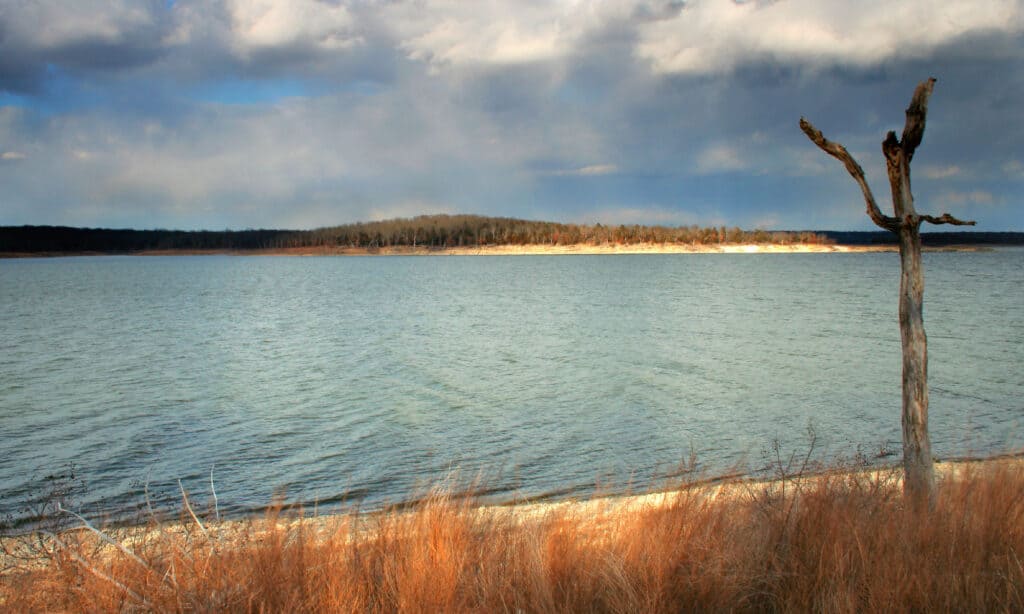
Harry S. Truman Dam and Reservoir is located is named after the former United States president
©iStock.com/StephenFB
● Surface Area: 55,600 Acres
● Max Depth: 80 Feet
● Camping/Overnight Available: Yes
● Boating/Docks Available: Yes
● Swimming Permitted: Yes
● Fishing Permitted: Yes
● Best For: Flood Control, Power Generation, Harry S. Truman State Park, Birdwatching, Camping, Hybrid Bass & Crappie Fishing
Harry S. Truman Dam and Reservoir is located in the southwestern region of Missouri. The reservoir was originally called Kaysinger Bluff Reservoir. When the dam was completed the reservoir was renamed Harry S. Truman Dam and Reservoir, to honor the former United States president who hailed from Missouri. Lake visitors can enjoy the Harry S. Truman Regional Visitor Center which has an observation deck offering views of the reservoir, nearby Lake of the Ozarks, and the Harry S. Truman Dam.
The reservoir is home to Harry S. Truman State Park, a fourteen-thousand-acre peninsula cutting into the reservoir offering six campsites and great birdwatching opportunities. Some of the bird species visitors can view at Harry S. Truman State Park include the little blue heron, wood duck, brown creeper, mallard, mourning dove, cooper’s hawk, American crow, barn swallow, wild turkey, fish crow, American white pelican, osprey, and loggerhead shrike.
Anglers can expect to find hybrid bass, white bass, and crappie in high abundance at Harry S. Truman Reservoir. Blue catfish and largemouth bass are also popular catches at the reservoir. Other fish species found at Harry S. Truman Reservoir include walleye, paddlefish, and spotted bass.
The photo featured at the top of this post is © iStock.com/Eifel Kreutz
Thank you for reading! Have some feedback for us? Contact the AZ Animals editorial team.



